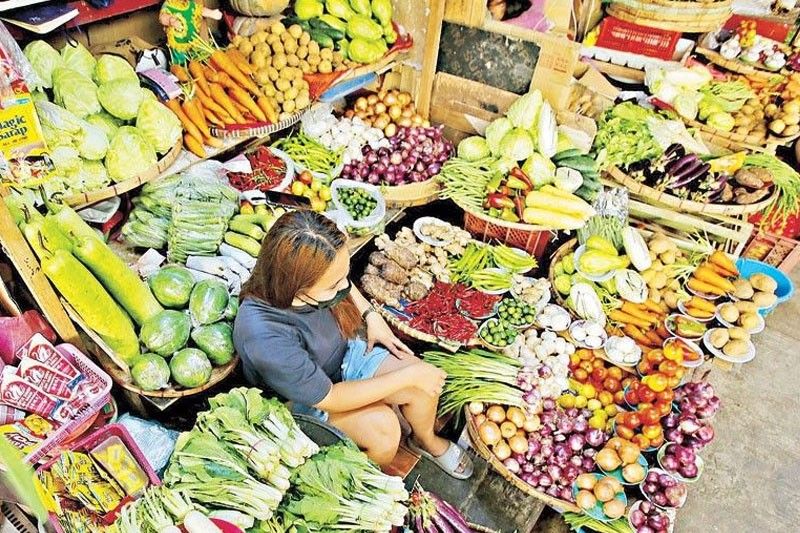Ex-DA chief warns of possible vegetable shortage

MANILA, Philippines — Former agriculture secretary and Federation of Free Farmers (FFF) president Leonardo Montemayor yesterday said that the production of vegetables will be affected by the El Niño phenomenon in the agriculture sector.
Montemayor added that El Niño could result in a supply shortage with vegetables in the country.
“In general, yes, because all plants need adequate water,” he told The STAR when asked if the supply of vegetables will be affected by the impending drought in the country.
In a separate radio interview, Montemayor noted that this early, the impact of the dry season is already felt in various areas.
“The palay harvest for the dry season crop is ongoing. At least the impact on palay is not yet felt, but for other crops that need water, like vegetables, these are already affected,” he said.
Montemayor added that the real impact of the El Niño phenomenon will start from July onwards.
“This is only a prelude as the real El Niño is expected to start by July onwards,” he added.
On Saturday, Climatology and Agrometeorology division chief Dr. Marcelino Villafuerte II of Philippine Atmospheric, Geophysical and Astronomical Services Administration (PAGASA)’s Impact Assessment and Applications Section, said the weather bureau may increase the El Niño alert status in May.
“Overall, if there is an issue with water due to lack of rains and high temperature, it affects the water for vegetables. Farmers should make sure that their crops receive enough water,” Montemayor noted.
He said many farmers expressed apprehensions on the threat of El Niño totheir produce.
“The anxiety of farmers is increasing. The drought will not only affect the crops, the high temperature will also affect animals. There is also a greater possibility that more problems will erupt like a red tide, so we really need to be prepared,” Montemayor said.
He added that the water for irrigation is also affected, particularly with the continuous drop in the level of Angat Dam, which supplies the requirement of at least 25,000 hectares of farmlands in Bulacan and Pampanga.
“If the NWRB (National Water Resources Board) increases the water allocation for Metro Manila, it will decrease the water allocation for the irrigation in Bulacan and Pampanga,” Montemayor noted.
He warned that farmers will suffer once the NWRB decides to limit the water allotted for irrigation.
“The farmers are ready to plant again. If the water supply is reduced, the palay production will be affected as well as the income of the farmers,” he explained.
Montemayor underscored the need for the government to implement a long-term solution to save water when a typhoon hits the country.
“We have a lot of water during the rainy season but we don’t have a long-term solution to save the water to ensure we have a reserved supply in case we will have issues with the supply. We have a supposed law on the water collection system but failed to implement this,” he said.
At the same time, Montemayor echoed the warning of FFF national manager Raul Montemayor on the possible rice crisis amid the possible shortage in the supply of the staple food.
“We are concerned that based on the data, our rice inventory is small and there is a possibility that we will have a shortage in our national supply of rice by July 1. We are down right now at less than 45 days overall supply. Ideally, we need at least 60 days just in case we don’t have harvest starting July and August,” he added.
According to Montemayor, the retail prices of rice also increased by P4 to P5 from January 2023.
“Based on our projection, since the start of the year, the retail price of rice has already increased by P4 to P5. This is due to an increase in the imported rice, especially from Vietnam and the high cost of inputs, particularly fertilizer and pesticide,” he said.
Montemayor added that the shortage in the rice supply could be felt during the lean months starting this July until mid-September.
“Even though India is not our supplier of imported rice, it is the biggest rice supplier in the world. India decided to stop the export of broken rice, because of this, many countries who source their rice from India will shift to other exporters like Thailand. It will really drive up the prices of rice,” he said.
Montemayor said the high cost of rice in the world market has slowed down the arrival of imported grains in the country.
“The biggest problem is we are aware of the projected local rice production, the carryover stock, or the supply as of January 1 this year but the entry of imported rice is affected by the spike in the prices of imported rice,” he said.
Villafuerte has said that there is an 80 percent chance that El Niño will be experienced by July this year.
“Based on historical events, we have an increase in the rains, or above normal if it is still developing in July, August, September. But come October, November, December, we will experience the effect where there are less typhoons and will persist in December, January, February, March, April. We expect the impact of possible shortage of water because of limited rains,” he said.
- Latest
- Trending






























